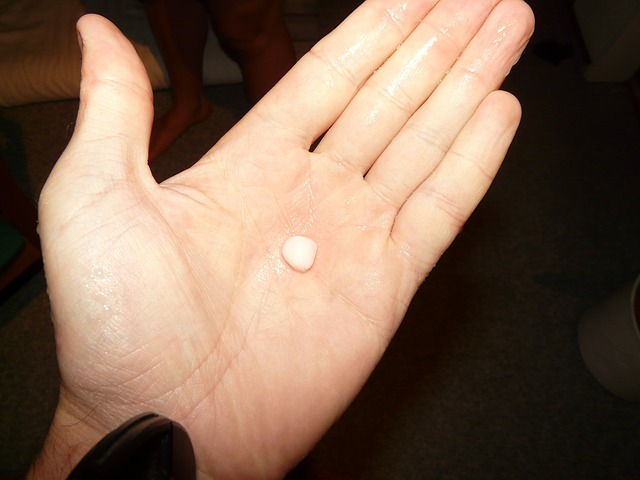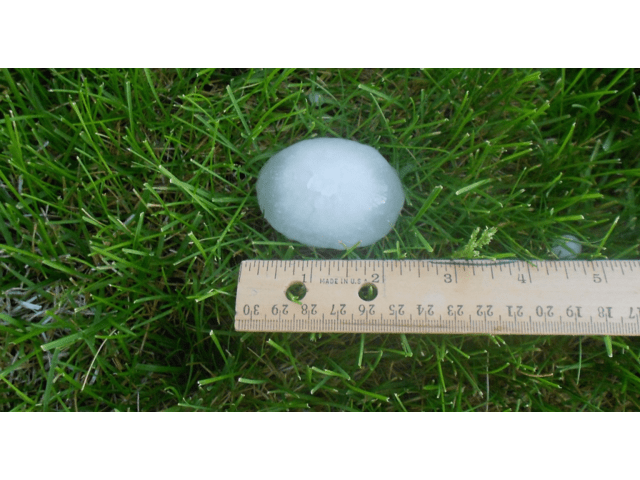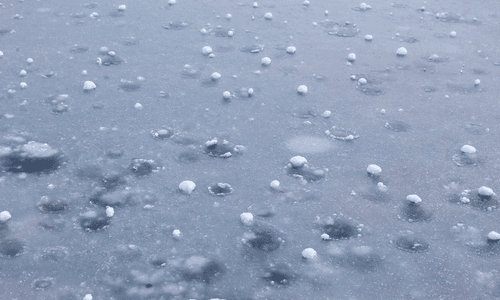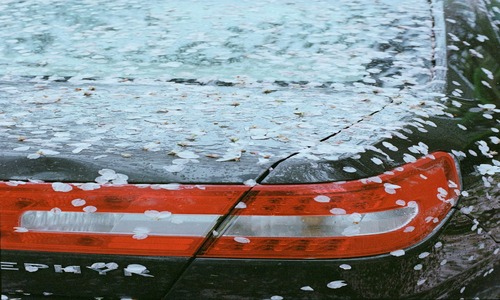What Size Hail Damages Cars? A Complete Guide to Protecting Your Vehicle

7 reasons to fix hail car damage immediately
September 9, 2024
Aluminum Body Repair: Why It Requires a Specialist?
October 17, 2024There’s a storm brewing; you can smell it in the air. The dark clouds overhead signal more than just rain – they carry one of nature’s most destructive forces: hail. While hailstorms are an awe-inspiring phenomenon, they often bring an element of fear to car owners.
As those icy stones fall from the sky, your only concern is how much damage yours will receive. However, the damage hailstones can inflict largely depends on their size. So, what size hail damages cars? This blog has the answer to this and more. But first, let’s take a moment to cover the basics.
Can Hail Damage a Car?
Yes, hail can damage a car, especially if the storm produces large hailstones or lasts for an extended period. Moreover, hailstones vary in size; the smaller ones cause minor cosmetic issues, while larger hail can wreak havoc, ranging from shattered windows to deep dents that affect the car’s resale value.
But how big does hail have to be to damage a car? That’s what we’ll discuss next.
What Size Hail Damages Cars?

Source: Freepik
The size of hail can range from as small as a pea to as large as a baseball. Needless to say, the extent of the hail damage to a car is directly proportional to its size. The bigger it is, the greater the potential to damage a vehicle.
To understand what size hail causes car damage, take a look at the following chart:
| Hail Size | Description | Damage to Car |
| Less than 1 inch | Pea-sized or smaller | Minimal to no damage |
| 1 inch | Quarter-sized | Dents on metal surfaces; potential paint chipping |
| 1.25 – 1.5 inches | Half dollar-sized | More significant dents, broken mirrors or windshields |
| 1.75 – 2 inches | Golf ball-sized | Severe dents; cracked or shattered windshields |
| 2.5 inches and up | Baseball-sized or larger | Major damage, including severe dents, shattered glass |
As you can see from this hail size damage chart, a car hit by pea-sized hail may not experience much damage, if any. Even if it affects the softer plastic areas, like the trim of your vehicle, you probably won’t require expensive repairs. On the other hand, golf ball-sized hail can cause severe hail damage, such as major dents and shattered glass. Unfortunately, golf ball sized hail car damage can rack up thousands of dollars in repairs.
I know what you’re thinking of right now. What size of hail can damage a car?
Based on observations, the minimum hail size to damage a car is 1 inch in diameter.
Let’s take a closer look at the different sizes:
Pea-Size Hail or Smaller

Source: Pixabay
Hailstones of this size are about 1/4 inch in diameter. They generally cause minimal to no visible damage to a car. However, they can still result in minor cosmetic impacts depending on the storm’s intensity.
Quarter-Size Hail
Hailstones measuring 1 inch in diameter are about the size of a quarter; A 1 inch hail damage car will have noticeable dents and possible paint damage, especially on large surfaces like the car’s roof, hood, and trunk.
Half Dollar-Size Hail
At 1.25 to 1.5 inches, these hailstones can lead to more significant damage, including larger dents, paint damage, and possible cracks in windows or mirrors.
Golf Ball-Size Hail

Source: Pixabay
Hailstones around 1.75 to 2 inches in diameter are capable of causing severe damage, such as deep dents, chipped paint, and shattered windshields.
Baseball-Size Hail or Larger
Hailstones 2.5 inches or more in size can cause catastrophic damage, including major dents, broken mirrors, shattered windshields, and structural damage to the car.
Factors That Determine Hail Storm Damage to a Car
While the size of hail is the primary factor in determining the severity of damage, other factors also influence the level of damage to a car during a hailstorm. These include:
1. Wind Speed and Direction
Strong winds can accelerate hailstones, causing them to hit the car with more force. Additionally, the direction of the wind can affect which part of the car gets hit the hardest, increasing damage to areas directly exposed to the wind.
2. Duration of the Storm
The longer a hailstorm lasts, the more opportunities for hailstones to hit the car repeatedly.
3. Density of Hailstone
Not all hailstones are the same. Some are softer and less dense, causing less damage upon impact, while harder, denser hailstones can cause more severe dents and cracks.
4. Material of the Vehicle and Age
The type of materials used in a car’s construction can influence how easily it gets damaged. Modern vehicles are often built with lighter materials and may dent more easily than older, sturdier models. Additionally, older cars may have worn-out paint or weakened structures susceptible to hail damage.
5. Existing Condition of the Car
Cars with minor dents, weakened paint, or previous damage may suffer more during a hailstorm, as the hail can worsen existing issues.
6. Car’s Position
Vehicles parked in open areas are more vulnerable to hail damage compared to those parked under protective coverings like garages or carports. The direct hits lead to more severe damage.
How to Protect Car from Hail
Car owners need to be prepared for potential hail, especially in regions prone to severe hailstorms. After all, prevention is the best protection against hail damage. Here are some simple ways you can protect your car from hail:
1. Use Covered Parking
Parking in garages, carports, or under structures can offer the most reliable protection.
2. Use Car Covers
Specially designed hail-resistant covers can absorb the impact of hail on cars, reducing the risk of damage.
3. Watch Weather Alerts
Stay aware of storm warnings in your area. This allows you to move your car to a safer location before the storm hits.
Hail Damage: What to Do Next?
If your car has been hit by a hailstorm, the first step is to measure the damage. Look for dents, chipped paint, and cracks in the windows or windshields. The earlier you identify the damage, the quicker you can file a claim with your insurance company and arrange repairs.
In some cases, minor dents from quarter-size hail or smaller stones may be fixed with paintless dent repair (PDR), a cost-effective and less invasive repair method. However, for more severe hail damage, traditional repair methods involving bodywork and repainting might be necessary.
Over to You
Knowing what size hail damages cars can help you stay prepared and take preventive measures to protect it. If you have already received hailstorm damage to your car, you need to bite the bullet and schedule repairs as soon as possible. This prevents further deterioration and helps maintain your vehicle’s value.
However, you need an expert auto repair technician with extensive experience repairing hail damaged cars. At Rapid Auto Hail Repair, we have a team of experts who have the skills and tools to offer comprehensive hail repair services. Besides that, we can help file your insurance claims. For details about how we can help you, speak to our hail damage repair specialists today, and let us restore your vehicle to its pre-storm condition.




